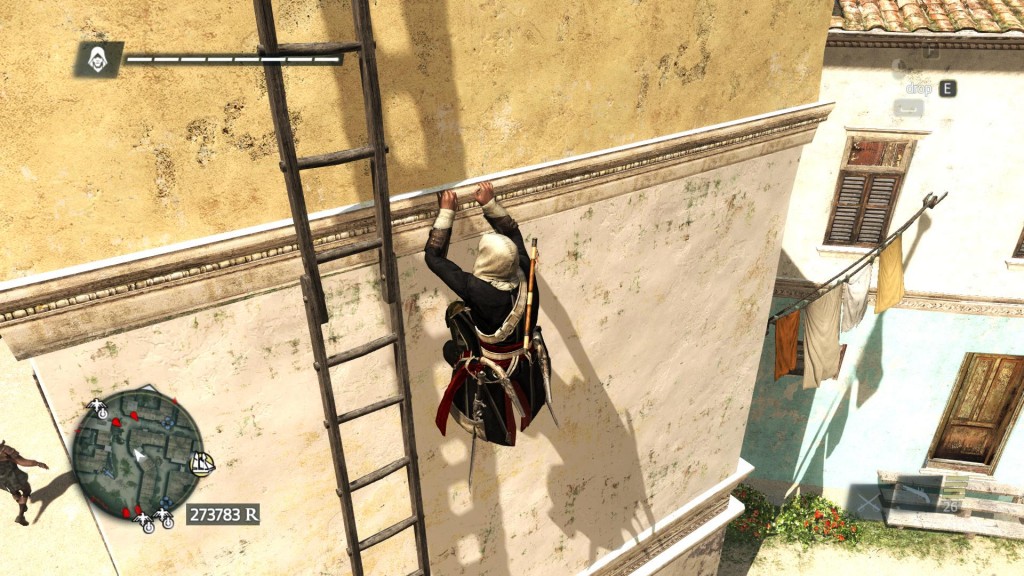My Steam account was recently gifted with the joy of Steam’s new In-Home Streaming feature, which lets you play a game from any computer in the house while using the hardware of your source computer to actually power it. This means, in theory, you could play the most bleeding edge games that only run on your gaming computer on something pathetically underpowered, like a laptop.
If I had to sum up my experience with the In-Home Streaming beta so far using only one word, this is how I would do it: No.
What seems to be a brilliant idea, taking the failure that was OnLive and doing it across a local network for zero latency, is in somehow a worse state than OnLive was. I’d rather play a twitch shooter in OnLive before I’d play a TBS in In-Home Streaming. Yes, it’s that bad right now.
Let’s first explain the process; hooking up is insanely simple. All you do is make sure Steam is installed on both systems, log into each computer on the same account, and after a few seconds it should properly detect and connect the two computers together. The Steam window in the computer you’ll be streaming to will now light up all the games installed on the source computer as if they were installed, and running any one of them now says “Preparing to stream” instead of the typical “Preparing to launch” you would usually get.
We tested 2 games today, Assassin’s Creed IV: Black Flag and PayDay 2. We also opted to use a wired connection just to make sure there would be no shenanigans going on.
I bee lined for Black Flag first, wondering how it would handle the fact that the Ubisoft launcher pops up prior to play. Once I started streaming, I was presented with a black screen for a good long time. Becoming impatient, I clicked around a little bit and hit Escape; I was now able to see the desktop of the source computer. After some chin-scratching I clicked on the task bar where I saw a Black Flag process show up, and poof, I was in the game viewing the startup logos. Not a smooth experience, but that’s why I chose Black Flag.
I knew immediately that something was wrong. Just moving my mouse around the main menu, there was pretty terrible lag that seemed like a mix between network and performance lag. I crossed my fingers hoping it wouldn’t get any worse when I finally went in-game. Sadly, it did.
The controls were very unresponsive, but in a random manner. Sometimes controls responded in a timely manner, but other times it would take up to a full second (1,000ms) for Edward to visibly react to my button presses. The streaming statistics, brought up by hitting F6, confirmed the abysmal things that were going on. Streaming performance jumped every second or two to such a high latency that it went 3 times higher than the maximum graph ceiling, completely leaving the top of the screen, before sloping down again to more reasonable (but still bad for a local network) latencies, around 100-200ms. Entire seconds of the stream would also be dropped on a constant basis, to where you would be running, the stream would freeze, and when it unfroze you’d be 10 feet ahead. This sort of problem signifies that the source computer is in fact running the game as expected, and that most of the fault is on the poor shape of the streaming technology.
Streaming a game imparts a sort of film-like quality to it. Because you’re basically watching a video that has been encoded in some way, you don’t get a perfect 100% crisp image. That said, it still looks good, and when the game isn’t skipping, spiking, and generally being unplayable, you catch very brief glimpses of the game running smoothly before it chops up again. Any action taken that would generate local files, such as snapping screenshots, does so on the source computer.
Black Flag is a pretty demanding game (unjustifiably) and so I went immediately to something I knew ran like butter, which was PayDay 2. If I gave the blow by blow of what happened here it would be a repeat of the Black Flag experience, so I’ll just say that the only difference here was that the game streamed immediately with no black screen or futzing around required. Same deal, though; terrible lag, constant chopping and teleporting around due to the stream being dropped every second, and unplayable by anyone’s definition of the word. For all the flak I gave OnLive for having such a poor latency that anything but puzzle games were unplayable, I will say that it was 10 times better than Steam’s In-Home Streaming, which for all intents and purposes is broken and unusable. It may be beta in name, but feels pre-alpha at best.






